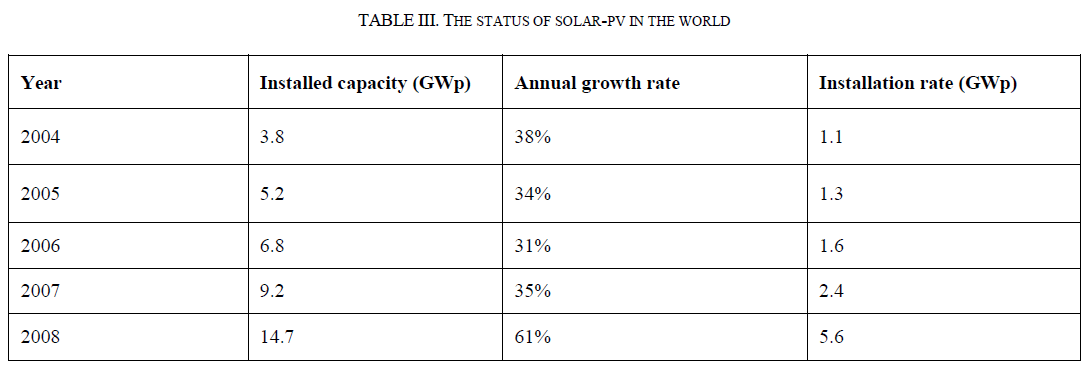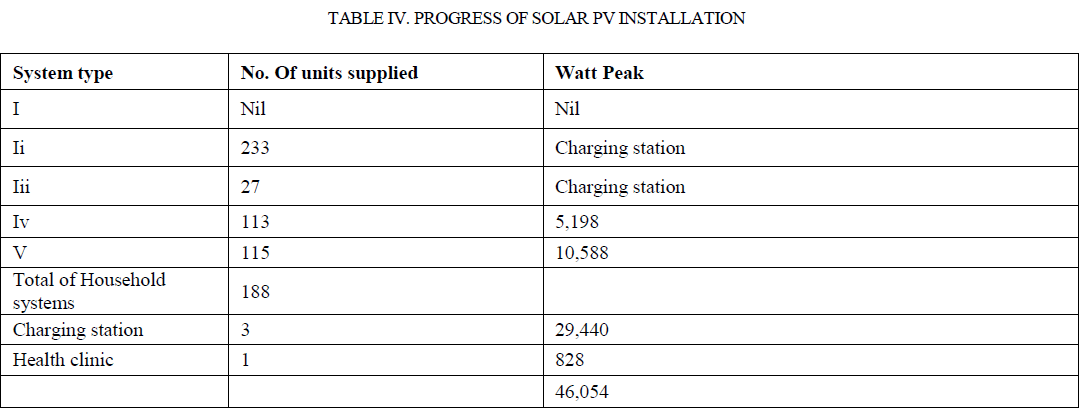ISSN ONLINE(2278-8875) PRINT (2320-3765)
ISSN ONLINE(2278-8875) PRINT (2320-3765)
| Asif Hassan1, Nasif Mahmud2, Md Shamiur Rahman3, Fayek Tasneem Khan4, Md. Imtiazul Haque5 Student, Electrical and Electronic Engineering, Islamic University of Technology, Gazipur, Bangladesh |
| Related article at Pubmed, Scholar Google |
Visit for more related articles at International Journal of Advanced Research in Electrical, Electronics and Instrumentation Engineering
Bangladesh is on the verge of facing energy crisis. According to the article 16.1 of Bangladesh Constitution fifty five percent of Bangladesh's inhabitants live without electricity, and the grid expansion rate to connect rural areas is threatened by the looming capacity shortage. By acknowledging the potential of renewable energy technologies (RETs) and associated energy storage, Bangladesh could possibly meet its unprecedented energy demand, thus increasing electricity accessibility for all and as well as financial growth. This paper will represent the role of solar energy in Bangladesh to overcome energy crisis.
Keywords |
| Bangladesh, Renewable energy sources, Solar home system (SHS), Solar PV. |
INTRODUCTION |
| Energy BANGLADESH lies between 20034' and 26038' North Latitude and 88001' and 92041' East Longitude with a total landmass of 1,47,570 square kilometers (56,977 Sq. miles). Bangladesh is surrounded by India on the West, North and Northeast, Myanmar on the Southeast and the Bay of Bengal on the South. Bangladesh has a strategic location and acts as bridge between South Asia and Southeast Asia. The Bangladesh Bureau of Statistics conducted a population census survey in the country on January 23 to 27, 2001. The population of the country stood at 124.35 million in 2001. The percentage of urban population was 23.52 while that of rural 76.47. Assuming medium variant of declining fertility and mortality the country is expected to reach a population of 145.46 million by 2011 A.D (Statistical Yearbook of Bangladesh 2008, BBS). |
| The solar constant (1.360 kW/m2) is the rate at which solar energy is received per unit area of the earth’s atmosphere. Because the cross-sectional area and the total surface area of the earth differ by a factor of 4, the average flux incident on the earth is one –fourth the solar constant, or 0.340 kW/m2. Of the atmosphere incoming, 49% is absorbed and rerediatated by the atmosphere. In bangladesh the average is 0.193kW/m2[1]. |
RENEWABLE ENERGY SOURCES |
| Using energy from sources which cannot be used up – sun, wind, water and waves – supports sustainable development by reducing carbon emissions. This contributes to increasing energy and climate security for many communities across the world. Renewable energy comes from sources which cannot be used up, such as wind, sun, water and waves, rather than from fossil fuels such as gas, oil and coal. |
| Renewable Energy Sources are: Wind, biomass, solar, hydroelectric, geothermal, wave and tidal.Among all of them wind is the most expanding worldwide. But due to the geological condition of Bangladesh solar is most suitable renewable energysource. |
IMPLEMENTATION OF SOLAR ENERGY |
 |
USE OF SOLAR PV IN BANGLADESH |
| Solar PV installation rates in Bangladesh are increasing rapidly. By July 2009, 25 MW of solar PV had been installed in the forms of Solar Home Systems, Centralized (AC) Systems, Centralized (AC) market electrification and roof top PV mini-grid system to pump water, for railway signaling, to power refrigerators, etc. Much of this is being driven by investment through donor agencies or international aid agencies. The current aim is that by 2012 one million households will be powered form solar PV panel, producing 50 MW of power [2]. However, the World Bank notes that the market for SHS may become saturated before the 1 million target is reached due to their relative upfront expense, and the risk that consumer confidence in the technology may fall as current SHS equipment wears out, and requires greater maintenance [3]. |
| Typically systems are sold in the range of 20-150 Wp and are coupled with an energy storage system consisting of batteries. Prices range from 15k to 79k Taka respectively. Main players are the Infrastructure Development Company Ltd which had installed more than 400,000 systems by October 2009, Grameen Shakti which had installed more than 283,000 systems by October 2009 and Bangladesh Rural Advancement Committee. Grameen Shakti aims to install more than 1 million systems by 2015, and a further 1 million biogas plants, and 10 million improved cooking stoves. |
| Manufacturers typically provide the peak power of their solar panels which is calculated under Standard Testing Conditions (STC) which is equivalent to 1000 W/m2 at 25oC and is primarily a function of the efficiency of the solar cells. |
 |
| For calculations of solar resource arbitrary efficiencies of 10% are normally assumed [4].The global supply chain in Solar-PV is far larger than in Bangladesh, with installation rates in 2008 of 5.6 GW and an annual growth rate approaching 40%, as shown in table-III [5]. |
| By 2030 the installation rate would have reached almost 1 GWp a year, which is highly plausible considering the European Photovoltaic Industry Association [6] predict that the solar-PV supply chain is expected to deliver and sustain production to support a market between 80 GW and 160 GW a year worldwide by 2030. Bangladesh would therefore represent approximately 1% of the global market under this scenario. |
 |
| More than 500 potential consumers have been trained on the operation and maintenance of the entire PV system. This was conducted by BCAS and CMES experts. AEC initiated solar PV program (SPV) in 1985. The systems installed over the period 1985-1994 are 9790 watt peak. Most of the systems are not functional at present because of the lack of fund for spare parts, maintenance and back-up service. |
 |
CONCLUSION |
| It has been made clear from the previous paragraphs that Bangladesh is already strongly dependent upon traditional renewable energy technologies and notable initiatives have been taken to popularize modern RETs by different agencies. Even a densely populated (1355 inhabitants/km2) country can live rather well with a solar energy input 80% with all the amenities that modern technologies can provide. The poor countries like Bangladesh in the tropical regions mobilize their resources to develop technology for the utilization of solar energy . |
References |
|